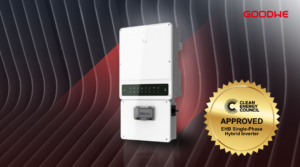Researchers at Australian National University Centre for Solar Energy Systems have unveiled new solar panel technology that they believe will greatly reduce the cost of solar power systems, provide greater shade tolerance and allow for the simultaneous heating of water .
The new panels are made up of thin troughs made up of mirror that concentrate the sun’s rays onto a solar strip alongside the troughs. The solar strip utilizes “sliver” technology, also invented at the University, which requires far less silicon that traditional solar panels.
While silicon is an abundant material; refining it for use in solar cells is intensive. The less silicon needed, the cheaper a solar panel can be made. Sliver technology takes a standard solar cell, which is around about 1 millimetre thick, and then slices it into very thin wafers of 120 micrometres thickness; creating 8 cells from the original.
The solar sliver strip in the ANU’s system also contains treated water, the heat from which is conveyed into the home’s hot water system.
The Australian Federal Government has provided $1.8 million seed money for the joint venture between the ANU, Tianjin University and Chromasun, a Californian company. The componentry will be manufactured in California and either China or India.
It’s estimated that the solar sliver/trough system could be commercially available in three years’ time; ; although some critics believe it will be far longer due to the delicate nature of the silicon cell slivers and problems in scaling up production to commercially viable levels.
Unlike other cutting edge solar technologies that are primarily targeted towards industrial applications, the aim of the ANU team is to make solar power more affordable for home owners. The goal is a price tag of $1000 for a basic system; but it may not be that cheap in Australia. Demand for solar power in Australia to date, although gaining popularity, is still under 1 per cent of the photovoltaics that went into Germany last year. However, the technology is expected to halve the current cost in this country of the combination of a grid connect and solar hot water system











































